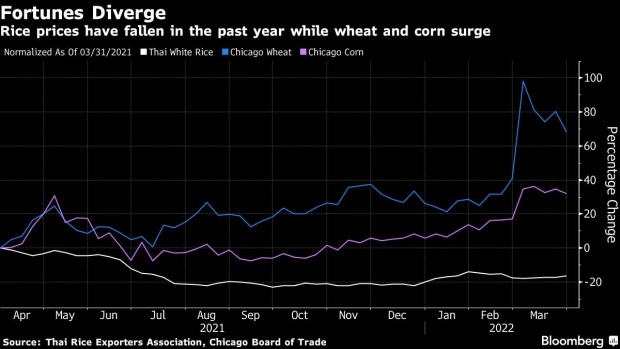Apr 1, 2022
Scientists Flag Rice Shortage Concerns as World Frets About Food
, Bloomberg News

(Bloomberg) -- Concerns are rising over the ability of Southeast Asia to retain its title as a major rice supplier to the world as countries such as Indonesia and the Philippines struggle to even produce enough for their own needs.
Current yield trends will not allow the two countries to be self-sufficient in rice, according to a study published in Nature Food journal in March. This means they will have to rely on imports to meet domestic demand for a staple crucial to food security, political stability and export potential.
“The new millennium has brought a number of challenges to rice systems in Southeast Asia,” the researchers said, citing increasing rice demand, yield stagnation and limited room for cropland expansion. “Concerns about rice shortages are back.”
The findings come at a time when worries over food security are growing around the world as Russia’s invasion of Ukraine puts one of the world’s major breadbaskets in jeopardy, further pushing up food prices that had already been on the rise. Still, rice prices have been relatively subdued due to ample production and stockpiles in top growing regions, keeping the food crisis from getting worse.
READ: The World’s Next Food Emergency Is Here as War Compounds Hunger
Prospects for rice self-sufficiency vary by country. Thailand and Vietnam produce more than they consume, while Indonesia and the Philippines “have struggled consistently” to meet rice demand from their own production, relying on imports, the researchers said.
It’s particularly crucial for regions like sub-Saharan Africa and the Middle East that Southeast Asia continues to produce a large surplus of rice, the researchers added, as it can help reduce global price volatility and provide stable and affordable rice supplies.
©2022 Bloomberg L.P.






